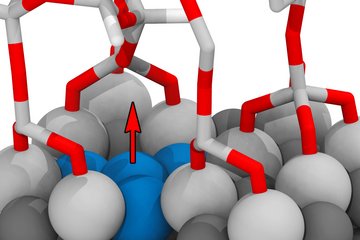All genres
101.
Journal Article
The effect of grain size and grain orientation on deformation twinning in a Fe–22 wt.% Mn–0.6 wt.% C TWIP steel. Materials Science and Engineering A 527, pp. 3552 - 3560 (2010)
102.
Journal Article
Electron backscatter diffraction study of Nb3Sn superconducting multifilamentary wire. Scripta Materialia 62 (2), pp. 59 - 62 (2010)
103.
Journal Article
Towards ultrahigh resolution EBSD by low accelerating voltage. Materials Science and Technology 26 (6), pp. 640 - 645 (2010)
104.
Journal Article
Microtexture and Grain Boundaries in Freestanding CVD Diamond Films: Growth and Twinning Mechanisms. Advanced Functional Materials 19 (24), pp. 3880 - 3891 (2009)
105.
Journal Article
Investigation of the indentation size effect through the measurement of the geometrically necessary dislocations beneath small indents of different depths using EBSD tomography. Acta Materialia 57, pp. 559 - 569 (2009)
106.
Journal Article
Electron channeling contrast imaging of twins and dislocations in twinning-induced plasticity steels under controlled diffraction conditions in a scanning electron microscope. Scripta Materialia 61, pp. 737 - 740 (2009)
107.
Journal Article
Comparison of damage development in dependence of the local microstructure in low alloyed Al-TRIP-steels, IF steel and a DP steel. Int. J. Materials Research 100, pp. 584 - 593 (2009)
108.
Journal Article
Determination of phase equilibria in the Co-rich Co–Al–W ternary system with a diffusion-couple technique. Intermetallics 17 (12), pp. 1085 - 1089 (2009)
109.
Journal Article
A study on the formation mechanisms of butterfly-type martensite in Fe–30% Ni alloy using EBSD-based orientation microscopy. Acta Materialia 57 (6), pp. 1931 - 1937 (2009)
110.
Journal Article
In-situ Observation of Butterfly-type Martensite in Fe-30mass%Ni Alloy during Tensile Test Using High-resolution EBSD. ISIJ International 49, pp. 1784 - 1791 (2009)
111.
Journal Article
Twinning-related microstructural evolution during hot rolling and subsequent annealing of pure magnesium. Materials Science & Engineering A 516, pp. 58 - 64 (2009)
112.
Journal Article
Microstructural aspects of crack nucleation during cyclic loading of AA7075-T651. Engineering Fracture Mechanics 76, pp. 709 - 714 (2009)
113.
Journal Article
Advances in TEM orientation microscopy by combination of dark-field conical scanning and improved image matching. Ultramicroscopy 109, pp. 1317 - 1325 (2009)
114.
Journal Article
Characterization of order domains in γ-TiAl by orientation microscopy based on electron backscatter diffraction. Journal of Applied Crystallography 42, pp. 1092 - 1101 (2009)
115.
Journal Article
Three-dimensional EBSD study on the relationship between triple junctions and columnar grains in electrodeposited Co–Ni films. Journal of Microscopy 230, pp. 487 - 498 (2008)
116.
Journal Article
Texture measurement of grain-oriented electrical steels after secondary recrystallization. Journal of Magnetism and Magnetic Materials 320, pp. e657 - e660 (2008)
117.
Journal Article
A 3D tomographic EBSD analysis of a CVD diamond thin film. Science and Technology of Advanced Materials 9, 035013 (2008)
118.
Journal Article
Water vapor corrosion of mullite: Single crystals versus polycrystalline ceramics. Journal of the European Ceramic Society 28, pp. 425 - 429 (2008)
119.
Journal Article
On the origin of deformation-induced rotation patterns below nanoindents. Acta Materialia 56 (1), pp. 31 - 42 (2008)
120.
Journal Article
EBSD as a tool to identify and quantify bainite and ferrite in low alloyed Al-TRIP steels. Journal of Microscopy 230, pp. 499 - 508 (2008)











